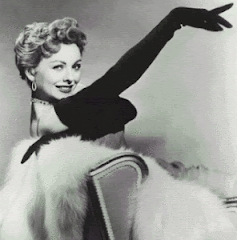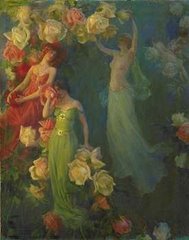 It's strange that sometimes when we smell something, we can't find the right words to describe what it is. We have the feeling that we should know what it is, because it smells familiar, but if we search in our brain to find the answer the answer comes slowly or not at all. I guess we all have experienced this once, I experience this a lot of times, because I work with a lot of scents. Sometimes I smell a material and the only thing that my mind tells me about it is that it smells earthy, floral or fruity. But it takes more time to search in my mind for a memory where I smelled this scent before to finally get the 'aha' moment. I once had this experience when I smelled the fragrance material: Butyl Quinoline Secondary, I recognized the smell of soil and earth, but I knew that I smelled a more specific scent. It took a while before I recognized the smell of red beets which also smells like soil and earth but was a more specific description of what the materials smells like.
It's strange that sometimes when we smell something, we can't find the right words to describe what it is. We have the feeling that we should know what it is, because it smells familiar, but if we search in our brain to find the answer the answer comes slowly or not at all. I guess we all have experienced this once, I experience this a lot of times, because I work with a lot of scents. Sometimes I smell a material and the only thing that my mind tells me about it is that it smells earthy, floral or fruity. But it takes more time to search in my mind for a memory where I smelled this scent before to finally get the 'aha' moment. I once had this experience when I smelled the fragrance material: Butyl Quinoline Secondary, I recognized the smell of soil and earth, but I knew that I smelled a more specific scent. It took a while before I recognized the smell of red beets which also smells like soil and earth but was a more specific description of what the materials smells like. Smell for the most part aggravates the lymbic system and the right side of our brain, where Episodic connections are received. Our right hemisphere is associated with memory of events, times, places and emotions. It looks at wholes not at parts of certain things. It's subjective, uses feeling and it's creative.
Smell for the most part aggravates the lymbic system and the right side of our brain, where Episodic connections are received. Our right hemisphere is associated with memory of events, times, places and emotions. It looks at wholes not at parts of certain things. It's subjective, uses feeling and it's creative.We use our left hemisphere of our brain to recognize and rationalize things Here are the Semantic connections received. We use it for meaning, analyzing, understanding, knowledge and language. It sub-divides and reconnect things. It looks at parts and it's objective. It uses logic.
Of course it's not as simple as this, there are grey areas in this field, but it's a rough explanation of how our right and left side of the brain works.
These two parts of our brains communicate with each other. Our right hemisphere send information to our left hemisphere, where the received information will be 'labeled', 'packaged' and analyzed. If we mostly use our right hemisphere if we smell something, then it's logical that it's hard to describe in words what it is, we need our left hemisphere to help us with it.
For example, if we are in traffic. Our right side of the brain tells us that an object which is going fast, that it is coming close to us. It doesn't tell us what exactly is coming close to us, but it's something that is going fast. Our left side of the brain however, recognize the object and tells us that it's a car and explains to us that we have to be careful. The same with scent, our right side of the brain 'looks' at things as a whole. So it will provide us with rough information such as; it smells floral, earthy, fruity. The left side of our brain will look at it as in parts such as; it smells like jasmine or it smells like peach.
A perfumer needs to recognize scents and needs to train his or her brain to do so. Using words to give a name to a certain scent is very useful. If something is named, it will be more recognizable. If people have to distinguish different nuances of colors for example, it will help if they know the names of the colors, to concentrate more on these colors, to distinguish them from the other colors. If they are confronted with these color nuances and their names a couple of times, their recognition of these nuances are getting better and better over time. The same with scents. It helps the brain to receive more than one 'code', in this case smell. The trick is to give your memory more than one way of remembering. You can do this by using more than one sense, (touch, sight, hearing, taste and smell).
Perfumers do not only have to recognize the scent of one single component, they sometimes need to recognize this single component in a blend as well. Some perfumers can, if they smell a perfume, recognize many of the components of this fragrance. A trick to recognize some of the components is called 'smelling in patterns'. Let me first give another example to explain it a bit more:
Most people can only remember 7 numbers in a random order, for example the numbers:
1261941
It's getting more difficult to remember 14 numbers in a random order like:
12619417211969
But if we would group the numbers in meaningful groups like important dates of events like:
12.6.1941 (bombing on Pearl Harbor) or
7.21.1969 (the first landing on the moon)
We remember the numbers a lot easier. The same with recognizing components in fragrances. If the perfumer can group some single components and recognize these groups, it will be much easier to recognize the different components. The perfumer can group these components if he or she knows how certain combinations of single components do smell. For example, if the perfumer recognize a Fougere note (perfume family) in the fragrance, he or she knows that the Fougere has to have Amyl Salicylate, Coumarin, Lavender and Oakmoss. Once this group of components is recognized, the perfumer can put this group 'aside' in his mind, and smell around this group.
It's said that the right side of the brain is dominant with creative people, here is a test to find how creative you are.
I found something incredible at YouTube. Some people see the girl turn clockwise and some see her turn counter-clockwise, some people even don't see her turn but see her swing from left to right. I had to try it a couple of times before I could 'make' the girl turn every way around and let her swing from left to right. They say that if you see the girl turn counter-clockwise you use more of your left brain(analytical) and if you see her turn clockwise you use more of your right brain(creative). The first time I watched the video, I saw the girl turn counter-clockwise and at the end of the video I saw her turn clockwise. Strange that I see her turn counter-clockwise what means that I use more of my left side of the brain, while I always am creative. I should have seen her turn clockwise, but I didn't. I wonder if it's because I watched it as an analytical experience and forced my left brain to give attention. I don't know how much this test proofs. Which direction do you see the girl move? If you like to know how to let her move all kinds of directions I will let you know.












11 comments:
LIEVE JENNY !
Now EVERYONE will know what we look like- lol !
I ADORE the photo of us....
You are speaking my language here, gelieverd.
I would love to be 'used' for research !
I think your post explains why so many neurologist friends/ colleagues appreciate, and are excited by, my perfume adventures.
They are so busy trying to 'map' the brain !
I love the fact that there leaves much to be learned.
No 'cut and dry' here...
I'm sending you energy, dear.
Dikke Kus !
Don't we look cute together? Did you watch the video with the dancing girl? I wonder which way you see the girl turn. I know you are a creative person as well, so I wonder if you see her turn clockwise.
Dikke kus terug!
I have to test the video when at home, in the train the video does not load fast enough. I am curious. And the picture is lovely...!
heheheh...all clockwise! Only if looking from the side, not focusing, then it is counter clockwise.
strange. Thank you for this cool video!
Hi Andy,
The trick is to look sidewards or to move your head a bit, then she will turn the other way around or will move from side to side.
Hi Jenny,
This is all very interesting, and I remember a couple of things from childhood. When I was a girl I had a friend with a cool dad, he gave workshops on how to remember things in business, names, places, etc.. it was connected to word association, one day, he had us remembering the 13 original colonies in just a few minutes by using a word association trick, i remembered it for years after that, but have now forgotten it.
Similar to music: every good boy does fine.
also, there is a little saying, left hand right brain, right hand left brain. I am a dominant lefty, eccept for twirling, and when I watched the dancer she was always moving clockwise.
I think of myself as being anylitical, yet have been a working artist my entire life.
I love this kind of thing, though, and perfumery is the perfect marriage of art and science. And something that cannot be mastered. Like mathematics, There are too many variables.
Cool Stuff!
Liz
Dear Liz,
I find these things very interesting too. Yes, a word association trick is very useful to remember things, in Dutch we call it 'ezelsbruggetje'which could be translated as 'donkey bridge', I have no idea why we call it like that.
I think, like you, that with perfumery we need both side of our brain. We need to be creative and need to be able to analyze and make conclusions.
Fragrant greetings!
Wow, I'm glad I stumbled upon your blog... I'll have to spend some time here later. Have you read a book called A Natural History of the Senses by Diane Ackerman? It starts out with "scent" and it's a wonderful read.
All the best!
Aly
Hi Aly,
No I haven't read the book, thanks for the tip.
Fragrant wishes!
At first when I watched the video the girl spinned counter-clockwise for like 30 seconds and then after every 30 seconds she turned. and the second time i watched the video she mostly spinned clockwise and turned around 1-2 times for like 5-15 seconds. I wonder what does that say about me?
Hi Jenny,
My name is Tayo from Nigeria, I just stumbled on your blog and I find it really interesting!
I plan on spending some time reading your previous blogs as soon as I get off work.
I was looking for a book on perfume making, any ideas?
Post a Comment